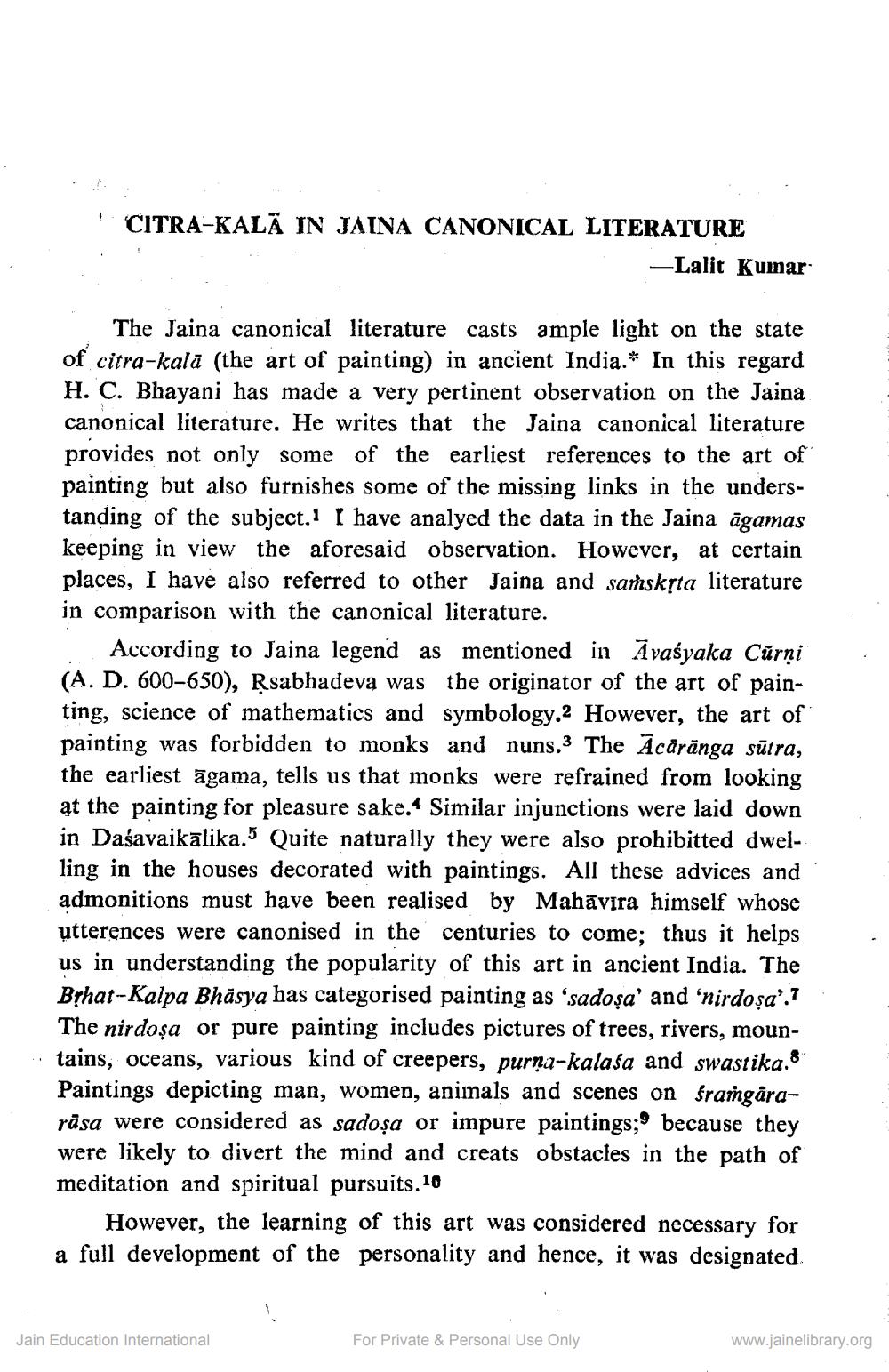________________
CITRA-KALĀ IN JAINA CANONICAL LITERATURE
—Lalit Kumar
The Jaina canonical literature casts ample light on the state of citra-kalā (the art of painting) in ancient India.* In this regard H. C. Bhayani has made a very pertinent observation on the Jaina canonical literature. He writes that the Jaina canonical literature provides not only some of the earliest references to the art of painting but also furnishes some of the missing links in the understanding of the subject.1 I have analyed the data in the Jaina āgamas keeping in view the aforesaid observation. However, at certain places, I have also referred to other Jaina and samskȚta literature in comparison with the canonical literature.
According to Jaina legend as mentioned in Āvaśyaka Cūrņi (A. D. 600-650), Rsabhadeva was the originator of the art of painting, science of mathematics and symbology.2 However, the art of painting was forbidden to monks and nuns.3 The Acäränga sūtra, the earliest āgama, tells us that monks were refrained from looking at the painting for pleasure sake. Similar injunctions were laid down in Daśavaikālika.5 Quite naturally they were also prohibitted dwelling in the houses decorated with paintings. All these advices and admonitions must have been realised by Mahāvira himself whose utterences were canonised in the centuries to come; thus it helps us in understanding the popularity of this art in ancient India. The Byhat-Kalpa Bhäsya has categorised painting as ‘sadoşa' and 'nirdosa'. The nirdoşa or pure painting includes pictures of trees, rivers, mountains, oceans, various kind of creepers, purna-kalasa and swastika.8 Paintings depicting man, women, animals and scenes on framgårarāsa were considered as sadoșa or impure paintings;9 because they were likely to divert the mind and creats obstacles in the path of meditation and spiritual pursuits. 10
However, the learning of this art was considered necessary for a full development of the personality and hence, it was designated
Jain Education International
For Private & Personal Use Only
www.jainelibrary.org




